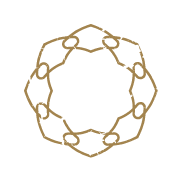Complexity vs Intensity
They say fools learn from their own mistakes, while the wise man learns from others. Consider me a fool! My mother reads these posts, so I won’t go into any specifics, but I’ve made enough mistakes in my life to make you all wise. My training life is no different.
One of those mistakes? Chasing complexity instead of intensity. Essentially, trying to do a movement with a learning curve so steep that my body can’t get the benefit. Uptown Movement’s level-based training philosophy lets you learn from my mistakes so you can make real progress.
What is complexity?
COMPLEXITY describes the technical difficulty of a movement. For example, a Kettlebell Snatch is a complex movement pattern. It’s not something you would just do naturally. In contrast, standing on your feet is very low in complexity.
Complexity gets added as the result of progress: it’s not an ingredient in progress.
What is exercise intensity?
INTENSITY is how hard you are working while performing a movement. How hard your muscles and heart are working. The general effort needed to complete a task. Intensity is subjective: certain movements feel easier than others. A banded hip hinge is an exercise that’s very intense without being complex.
Intensity is a key ingredient in progress. Without the appropriate intensity, the body won’t need to adapt. Without adaptation, there is no progress.
What is the problem?
We like shiny new things.
When we see Instagram videos of people who care too much about how they look (and not enough about wearing shirts!), we usually see a fast movement that is very complex. It’s eye-catching, but they’re more interested in your pageviews than in your progress. These people are sharing the result of their work, not the methods.
However, as viewers, we don’t know that. We assume complexity gave them the gleaming abs. But the reality is they are showing the result of years of consistent –and intense--work on the basics.
We assume we need this complexity, so we try to copy this snazzy exercise. When we do, we end up compensating. We mimic a move that looks like the exercise, but doesn’t drive the body to adapt. This means:
We don’t create the intensity needed to progress.
We don’t progress.
We see the next shiny thing.
And we repeat the cycle.
What’s the solution?
Focus on the basics. Get super strong (intense) in basic movement patterns before adding complexity.
Let’s go back to our Kettlebell Snatch example. This is a hinge. To get there, you first build your understanding and strength performing the Deadlift: a much less complex hinge exercise. Once you are confident and strong in the deadlift, you start to learn the Kettlebell Swing, while keeping your deadlift in the program for intensity. Eventually you learn more complex swings, which are the basis for the snatch.
How can we improve our intensity?
This is why we have a level-based system at Uptown Movement. It leads us to train at the right intensity required to progress.
We use the Foundations/Open level classes to build strength and confidence through basic movement patterns like hinging, squatting, crawling, and carrying. That’s our intensity. We use the Foundations Skills Classes to learn skills (like the swing) at a slower pace. Because the skills are not as complex, we can advance relatively soon.
In Explore, we add speed. We train the Kettlebell Swing hard, and use the Advanced Skills Classes to learn methods to increase intensity like the Clubbell Cast. Here, the skills get much harder, so it takes a longer time to advance.
The Evolve classes integrate complex Advanced Skills into the daily program, and then we practice with greater intensity.


